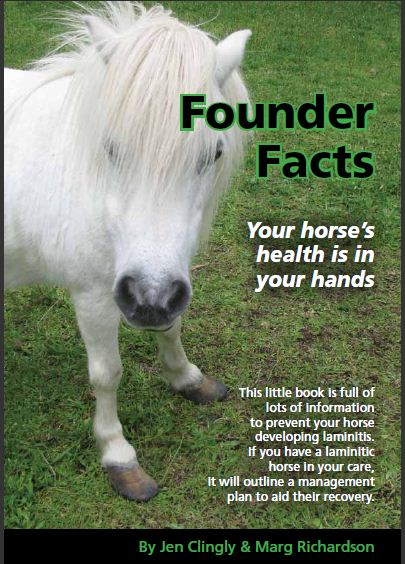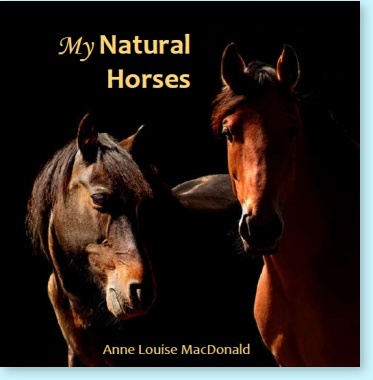By Carol Layton – Balanced Equine

There are many factors that influence the type of hoof a horse will have; these include
- genes,
- type of environment,
- amount of movement,
- quality of hoof care, especially in the early years of a horse’s development
- and nutrition.
No one factor on its own can produce the best possible hoof if one or more of the others are working against it. Nutrition alone can’t do it, nor can hoof care on its own.
Studies specifically looking at nutrition and hooves have shown that certain nutrients can affect rate of hoof growth, how hard and tough the hooves can be, how strong the cellular connections in the wall, sole and frog are, the thickness of the wall, prevalence of seedy toe (white line disease) and laminitis.
Any weaknesses in the horn can lead to microscopic openings for microbes to gain entry to cause infections, to large cracks and chips.
Deficiencies in protein including specific amino acids for keratin production, essential fatty acids (omega-3 and omega-6), selenium, vitamin E, biotin and copper and zinc will negatively impact on hoof growth and quality.
Fortunately, on a high forage diet, vitamins like biotin are far less likely to be deficient. If biotin is not deficient, the amount supplemented will be excreted.
The hoof wall is about 93% protein on a dry matter basis; protein is the structural component of all organ systems. Amino acids are the building blocks of protein, some like lysine and leucine are known as ‘essential’ which means that they have to come from the diet and others like alanine and glutamine are ‘non-essential’, they can be manufactured by the horse.
The key proteins in the hoof are keratins, mainly an alpha-keratin which gets its strength from the cross linking of the amino acids alanine and glycine and the sulphur containing amino acid cysteine, manufactured from methionine. The more cysteine; the harder the hoof horn.
Cells that contain keratin arrange themselves in long tubules which, in turn, arrange themselves in a spiral that acts like a spring. The tubules deform, and then bounce back when the horse bears weight on each foot, providing a natural cushioning effect.
The chemical structure of keratin differs depending on whether it makes up soft tissues like skin and hair to the very strong and tough tubules of the hoof wall. In the hoof wall, the process of keratinisation makes the fibres insoluble in water and more resistant to chemical and physical attacks. In comparison the frog and white line are slightly different chemically, resulting in greater elasticity but lower physical strength.
Much has been written about the importance of zinc in the hoof and justifiably so. Zinc is present in high concentrations in the hoof with one form being the zinc finger proteins, rich in the amino acid cysteine. As part of the zinc finger proteins, zinc is needed for cell multiplication and the assembly of keratin. Zinc proteins incorporated into keratin are also responsible for the helical structure that gives hooves their strength. One study showed that horses with insufficient hoof horn strength had less zinc in the hoof horn and plasma than did horses with no hoof horn damage.
Many enzymes that are responsible for a multitude of cellular processes require zinc, such as binding calcium in keratin. In people, nearly 100 different enzymes depend on zinc for their ability to catalyse vital chemical reactions.

Copper doesn’t get the same attention as zinc in the hoof but the synthesis of the harder type of keratin is linked with copper as well as formation of connective tissue. In horses, one study found a deficiency in both zinc and copper increased the incidence of seedy toe in performance horses.
In cattle, a copper deficiency is known to be a cause of poor hoof condition, greater incidence of foot rot, heel cracks and sole abscesses.
The basic nutritional management for horses should be the same, whether you have a much loved member of the family in the back paddock or are feeding a horse to comfortably complete a trail ride or a high level performance event.
The foundation of any diet should be high fermentable fibre forage; pasture and/or hay. The ultimate goal in feeding should be to have a healthy horse able to perform at the best of their ability at their level of fitness and conditioning with a well-supported and robust immune system.
All horses, regardless of the level of work or whether they are breeding will benefit from a diet with sufficient nutrients and balanced minerals.




Thank for sharing your insight about horses, what a really nice job.
I am seeing curly tips on my horses hair. He receives a hoof supplement and straight biotin but does not get a mineral block . Could the hair be a lack of minerals and do you suggest a mineral block?
Hi Sue,
yes the curly hair is often a sign of lack o copper, or a high worm burden. A mineral block probably won’t help as many don’t have enough copper. The Balanced Equine minerals are the most reliable way to boost copper intake and keep it in balance with zinc which is important for overall absorption of both minerals.
All mammals need 90 essential nutrients that mostly cannot be found in food. That means they need 60 minerals, 16 vitamins, 12 Amino Acids and 2 fatty acids (Omegas) supplemented in their diet on a daily basis. Plants can make vitamins, but not minerals unless the minerals are in the soils. If the soils are depleted in the minerals, the plants can’t uptake something that is not there. Minerals are spread out in different areas, in different quantities. In other words, some areas are heavy in some minerals and other areas very light. Wild horses have many different areas they will seek out for the minerals. They have mineral licks and salt licks. They can travel 20 miles for different minerals. However, they still will lack in some minerals in that 20 mile area. A stabled horse or one on a few acres cannot ever get what they need in the food you feed or the hay/grass. This is exactly why you need to find a supplement that will provide all 90 essentials. Since there is no regulations on supplement companies, most cannot or will not provide anything close to 90. You’re lucky if you can find a company that provides just 30. Be careful of fractionated supplementation. Many of the vitamins/minerals need co-factors to be able to be absorbed properly in the digestive system. There are only about 3 companies that have the proper amount, 2 of the three are way overpriced. I can provide more info for anyone interested on the supplement that I use that has the 90.
Hi Mary, I asked Carol Layton from http://www.balancedequine.com.au to answer your comment as she has much more knowledge than me in this area.
“Interesting view but there is no scientific support for the belief that you need to supplement 90 plus nutrients for horses on high forage intakes.
Soil is made up of three main components – minerals that come from rocks below or nearby, organic matter which is the remains of plants and animals that use the soil, and the living organisms that reside in the soil.
If there are no minerals, it’s no longer defined as soil. Depleted soil means that there are less minerals but it’s referring to the top cm’s of the soil profile from say intensive farming. If the soil didn’t have any minerals, no plant could grow in it.
There is no such thing as a plant that is not made up of minerals. Have you had your pasture or hay tested? If you did, you would find that the nutrient profile is not as bad as you say.
At this point, despite decades of research, no link has been proven for horses having a mineral craving. Yes to salt, they will travel long distances to a salt lick.
A product with 90 or so nutrients is going to be a waste of money and will be highly unlikely to contain sufficient levels of what horses actually need.”
Hope this helps.
Yes please
What do you feed that has all 90 essentials? My horse has sloughed her frog, it’s down to the yellow part. She also has been diagnosed as being exposed to EPM & I have treated her for this.
Hi Betty, what you feed will depend on what you have access to for your horse as everything that goes into your horse contributes to the ’90 essentials’ and when an equine nutritionist has an analysis of feeds you’re using, plus pasture or hay tests, they can then work out what is missing, and formulate a custom supplement recipe for your unique situation.
They can also advise in general terms if you’re using a commercial feed and have access to many other pasture/hay tests from your area. This is how Carol Layton from Balanced Equine, is able to formulate her mineral mixes that are a ‘best guess’ for a specific place.
So ideally, find an independant equine nutritionist in your area (or at least country) to guide you. All the best for your mare’s recovery.
How much is in the large packet of horse health minerals? I have horse with very bad seedy toe and greasy heel. Spray with copper sulphate not working.
Farrier says it must be kept dry. So can I clean as suggested?
The large mineral packs are 4.9 kg (to fit in a 5kg satchel) and are perfect for helping horses with seedy toe and greasy heel. The best way to clean up seedy toe is have your farrier or hoof trimmer trim the hoof then dig out all the black muck completely followed by packing it with a mix of copper sulphate and either vaseline or beeswax. Plug the end with some cotton wool if possible to keep dirt and air out.
So what is a good supplement for zinc, copper etc.
ALSO, can high iron content in well water cause lots of problems in horses and what can be done to counteract?
Thanks
Hi Betty,
Yes high iron in well water can cause problems if your horse is insulin resistant or prone to laminitis. The only way to counteract it is to provide another source of water, such as rain water if possible. Here are a couple of interesting articles: https://www.equinemedsurg.com/articles/insulin-resistance/high-iron-why-to-avoid-it-and-weeds/ and https://www.thehorse.com/articles/31737/insulin-resistance-and-iron-overload
I’m not sure what supplements are available in your are, but we recommend our Best Guess as a good source of balanced copper and zinc https://www.naturalhorseworldstore.com/feed-supplements/, and can also ship this worldwide if you’re not in Australia.
Very nicely written blog entry. Balanced nutrition is so important for proper overall health as well as hoof health. We have a couple fantastic free webinars on the importance of GMO FREE nutrition for your equine partner at https://thoughtfulequestrian.com/gmos-they-effect-my-horse/ – Take a look. It’s a great compliment to this excellent blog post.
Really helpful article for horse owners